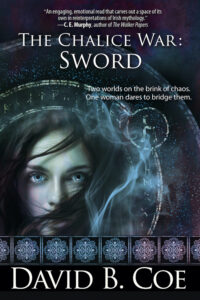 A week and a half from today, on Friday, August 4, The Chalice War: Sword, the final book in my Celtic urban fantasy trilogy, will be released by Bell Bridge Books. (The first two books, The Chalice War: Stone and The Chalice War: Cauldron, are already out and available. If you haven’t already gotten them, please consider doing so. And if you have read them, please consider leaving reviews at your favorite book sites.)
A week and a half from today, on Friday, August 4, The Chalice War: Sword, the final book in my Celtic urban fantasy trilogy, will be released by Bell Bridge Books. (The first two books, The Chalice War: Stone and The Chalice War: Cauldron, are already out and available. If you haven’t already gotten them, please consider doing so. And if you have read them, please consider leaving reviews at your favorite book sites.)
I won’t bother telling you that I’m excited for this release (though I really am). The fact is, I get excited for every new release (but especially this one — really!). Even after so many published books (Sword will be my 30th) the thrill remains much the same. And there is something extra special about the concluding book in a series. A couple of weeks ago, near the end of my “Beginnings, Middles, and Endings” feature, I wrote about the things we want to accomplish with the final chapters of our novels, including bringing our story to a satisfying and thrilling culmination, completing our character arcs, and tying up our remaining loose ends. We want to do this with any novel, but to state the obvious, it is absolutely crucial to nail the ending of a final book in a series.
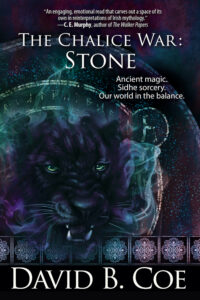 The premise of The Chalice War trilogy is fairly simple. The four treasures of the Sidhe — the Stone of Fal, the Spear of Lugh, the Daghda’s Cauldron, and the Sword of Nuadu — are chalices of magic. As long as they remain in this world, the Above, the Sidhe sorcerers living in our midst can continue to protect our world. But the Fomhoire, masters of the demon Underrealm, seek to take the chalices from our world into the Below, and if they succeed, magic will cease to exist in our world and demons will overrun the face of the earth.
The premise of The Chalice War trilogy is fairly simple. The four treasures of the Sidhe — the Stone of Fal, the Spear of Lugh, the Daghda’s Cauldron, and the Sword of Nuadu — are chalices of magic. As long as they remain in this world, the Above, the Sidhe sorcerers living in our midst can continue to protect our world. But the Fomhoire, masters of the demon Underrealm, seek to take the chalices from our world into the Below, and if they succeed, magic will cease to exist in our world and demons will overrun the face of the earth.
The first two books are set entirely in the Above — our world — where Sidhe sorcerers do battle with Fomhoire demons to protect two of the chalices (the titles give away which ones). But I wanted to do something different with the third book. And honestly, for a long time, I didn’t know what exactly that would look like.
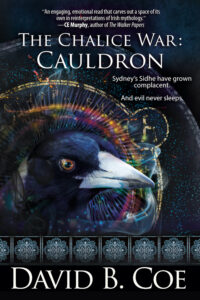 You see, I wrote the first iteration of book one, Stone, more than a decade ago, when I was in a lull in my career and was looking for something to write for the fun of it. I loved that first draft, but it needed work, and around the time I finished it, I signed my first Thieftaker contract, putting an end to the aforementioned lull. I started work on the second book, Cauldron, about seven years ago, hit a wall, put it away, came back to it four years later and finished it. Now, usually when I write a series, I know as I begin book one how the last book will end. Not with this series, because when I wrote that first book, I was playing around. I had no idea what it would become. So even after I finished the second book, I still wasn’t sure what to do with the series, because I had no idea how to write the third book without making it simply a repeat of one of the first two.
You see, I wrote the first iteration of book one, Stone, more than a decade ago, when I was in a lull in my career and was looking for something to write for the fun of it. I loved that first draft, but it needed work, and around the time I finished it, I signed my first Thieftaker contract, putting an end to the aforementioned lull. I started work on the second book, Cauldron, about seven years ago, hit a wall, put it away, came back to it four years later and finished it. Now, usually when I write a series, I know as I begin book one how the last book will end. Not with this series, because when I wrote that first book, I was playing around. I had no idea what it would become. So even after I finished the second book, I still wasn’t sure what to do with the series, because I had no idea how to write the third book without making it simply a repeat of one of the first two.
Except that’s not quite true. Early in the series, I reveal that the Fomhoire have already succeeded in stealing one of the chalices. The Sword of Nuadu is already in the Underrealm; the future of our world is poised on the edge of a blade. So, naturally, book 3 had to be about a journey into the Underrealm, the demon world, to steal back the lost sword.
But the idea of this intimidated me. I had no idea what the demon realm was like. I had no idea how to write such a book. So, I put books 1 and 2 back in a drawer, and I wrote the Radiants books, which was fun and great. I LOVE those books.
But the Chalice books haunted me. And the challenges of that third book called to me. I needed to create the demon realm, making it believable and tangible and rich and compelling, but also menacing enough to carry its share of the plot. I needed to have an exciting, engaging second plot line set in our world so that the characters who don’t go to the Below are still busy with Important Stuff. And, as mentioned earlier, I needed to nail the ending, to hit all the right emotional notes while tying off every one of my plot threads from the three books.
No pressure.
The fact is, not knowing what to write is an impediment to starting a project. But perceiving challenges? Seeing in a potential novel tasks that are going to force me to grow as a storyteller? That right there is incentive. And once I started working on the third novel, once I overcame that sense of intimidation, the book flowed quite easily. The result, in my biased opinion, is a strong, successful conclusion to what I believe is one of my best series yet. I hope you agree.
I posted a teaser last Friday, and will post another one this Friday. I hope you enjoy all three books. Thank you, as always, for your support of my work!
Keep writing!!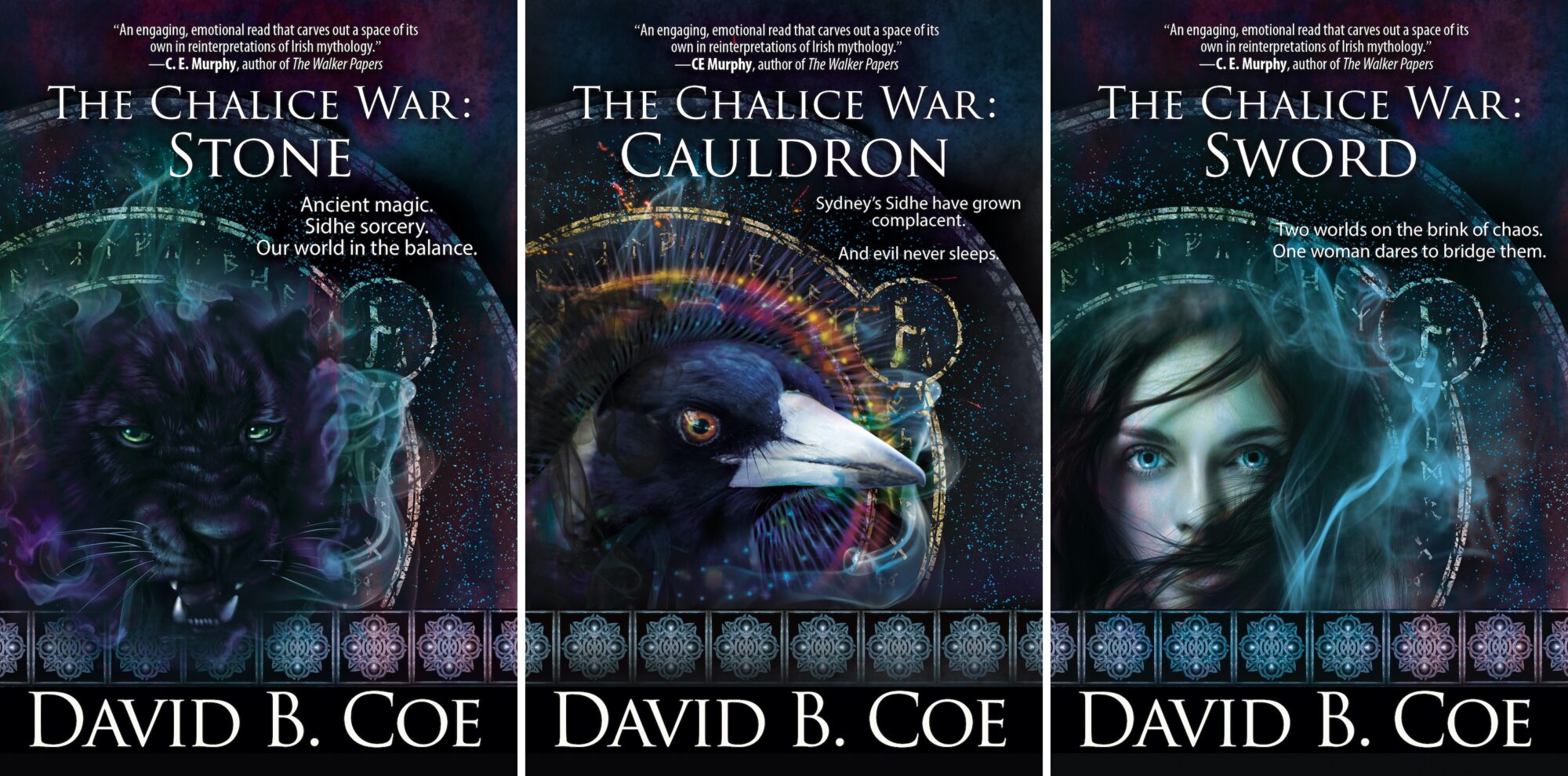









 When I finished writing the first draft of The Song of All, I was convinced of two things:
When I finished writing the first draft of The Song of All, I was convinced of two things: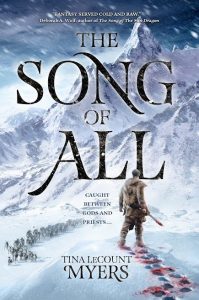 Over the next several months, as I edited The Song of All and honed my query letter, I felt confident saying, “The Song of All is a stand-alone epic fantasy novel with series potential.” After all, I had an outline, a roster of characters, and some heartfelt themes. I knew where the story was going and where it would end up. But when the series sold based on the first book and I began to write the second book, I soon realized that, while I had read tons of books in series, I had little or no idea of how to write one. In my giddy state as a writer with a book contract, I didn’t let this fact stop me. I continued to write the story, knowing that I would need to rewrite it many times, confident that I would learn how to write a series.
Over the next several months, as I edited The Song of All and honed my query letter, I felt confident saying, “The Song of All is a stand-alone epic fantasy novel with series potential.” After all, I had an outline, a roster of characters, and some heartfelt themes. I knew where the story was going and where it would end up. But when the series sold based on the first book and I began to write the second book, I soon realized that, while I had read tons of books in series, I had little or no idea of how to write one. In my giddy state as a writer with a book contract, I didn’t let this fact stop me. I continued to write the story, knowing that I would need to rewrite it many times, confident that I would learn how to write a series. 1. Fully explore and flesh out the world-building. For some writers of science fiction and fantasy this might be obvious because world-building is their jam, but for other writers, who are more interested in themes or characters or plot, digging deep into world building might not be their first choice. Nevertheless, the better your understanding of how your world works (geography, socio-economic and political structures, cultural and legal norms, clothing, food, relationships, architecture, magic, etc) the easier it will be to see how the plot will unfold, where the themes might manifest, and how the characters will react.
1. Fully explore and flesh out the world-building. For some writers of science fiction and fantasy this might be obvious because world-building is their jam, but for other writers, who are more interested in themes or characters or plot, digging deep into world building might not be their first choice. Nevertheless, the better your understanding of how your world works (geography, socio-economic and political structures, cultural and legal norms, clothing, food, relationships, architecture, magic, etc) the easier it will be to see how the plot will unfold, where the themes might manifest, and how the characters will react.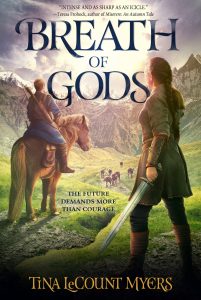 4. Upping the stakes without jumping the shark. What keeps someone reading a series? Characters we love (so develop those characters) and the situations they find themselves in. As a reader, I fall in love with characters and want to know what happens to them as they face challenges, but if they face the same challenges over and over it can get boring. I want them to learn and grow from their obstacles. As a writer, creating new challenges for growth can run the risk of going over the top. Killing off everyone that a character loves over a series definitely ups the stakes. But where does it leave your character? And where does it leave your reader? It is a balance between tension and emotional exhaustion, and something which I am still working on.
4. Upping the stakes without jumping the shark. What keeps someone reading a series? Characters we love (so develop those characters) and the situations they find themselves in. As a reader, I fall in love with characters and want to know what happens to them as they face challenges, but if they face the same challenges over and over it can get boring. I want them to learn and grow from their obstacles. As a writer, creating new challenges for growth can run the risk of going over the top. Killing off everyone that a character loves over a series definitely ups the stakes. But where does it leave your character? And where does it leave your reader? It is a balance between tension and emotional exhaustion, and something which I am still working on.